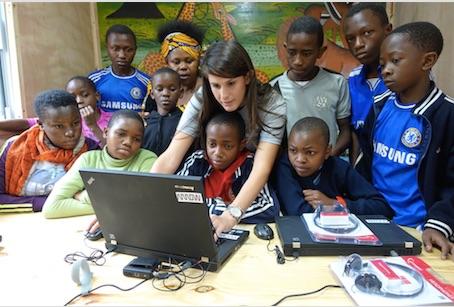China’s Straddling Bus Slams into a Great Wall of Ridicule


Last week, a city in northeastern China rolled out a futuristic 'straddling bus,' formally known as a transit elevated bus (TEB). It's not quite a bus as it needs rails in order to move. And its massive size doesn't allow for a flexible route similar to that of a typical city bus. But the potential is its purported scale: This behemoth promised to hold over a thousand passengers while allowing two lanes of traffic to pass beneath. Nicknamed the “batie,” its test run also scored props for being emissions-free as it ran on battery power.
A number of media outlets, including TriplePundit, covered the test run last week. And some analysts said the technology could revolutionize urban transport.
The enthusiasm did not last long, however. Shortly after it completed its test run in the city of Qinhuangdao, publications including the Financial Times questioned the efficacy of this form of transport. FT questioned the financing behind batie, starting with the haggling between its inventor and the developer of this huge elevated bus.
Meanwhile the concept was viciously criticized on social media, particularly on the Chinese microblogging site Weibo. One blog even labeled batie as a financial scam.
A writer with CityLab detailed how batie’s promoters wilted as criticism mounted, backtracking on their hyped claims and finally saying the launch was really a test run for the vehicle’s braking system.
Others compared batie to Ezubo, a peer-to-peer lending platform that Chinese officials shut down earlier this year amid Ponzi scheme accusations.
And when Xinhua, China’s official news agency, visited what was reportedly batie’s factory, all they found was a sprawling pile of dirt. The BBC dug even further into doubts over batie, going beyond some of the obvious shortcomings. A questionable business model, the dubious history of the companies affiliated with this venture and a once bustling showroom that is now shuttered have all contributed to the conclusion that batie has no future.
A big part of batie’s problem was the way in which it was rolled out. The initial test run was only about 300 meters (984 feet) long with an even longer trail of over-promises and hyperbole. Contrast that to the first test run of California’s hyperloop, which scored its fair share of enthusiasm but overall was presented as a single step toward the future – not the future itself.
The backers of batie opened the door to unrelenting scrutiny by overselling this vehicle’s potential. Anyone who looks at the pictures can see a vehicle that would not be able to navigate around corners. The need to have rail installed would still require a significant amount of investment in infrastructure. Cities would also need to construct special platforms so passengers could board and exit. And batie would be useless on roads with low overpasses or pedestrian walkways above the street.
Sure, on some wide streets in major cities, this type of train/tank/bus could probably work. But plenty of testing remains on the agenda, including how harried drivers would react if this aircraft carrier-like structure suddenly loomed overhead on their race to the office.
The short-lived excitement over batie was not necessarily that a hulking bus-rail hybrid would save the world, but that it could spur new innovations, from battery technology to the development of more lightweight materials. But the acrimony and back-stabbing that has come out of this test run shows what can happen when arrogance and crass self-promotion get in the way of offering real solutions to some of the world’s most pressing challenges.
Image credit: New China TV/YouTube Screenshot
This Action Plan is Changing the Future of Offshore Wind, and More People Need to Know
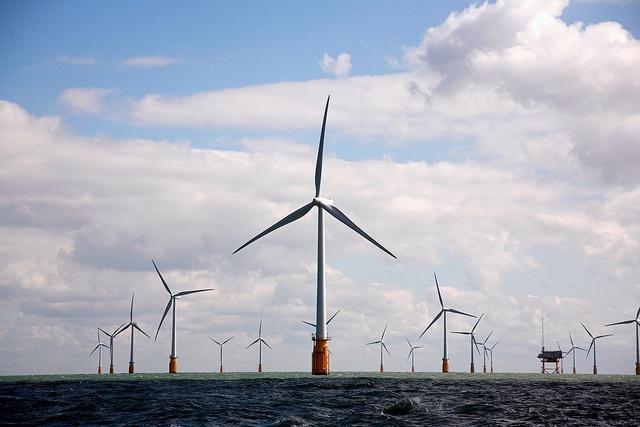

By Sam Poli
In the last decade, the federal government and its agencies have followed a hands-on approach to bring renewable energy to the forefront of American industry. Recently, a publication by the Mid-Atlantic Regional Planning Body (MidA RPB), in accordance with President Barack Obama’s national ocean policy, defined a clear future for offshore wind development on the Atlantic coast.
MidA RPB, in collaboration with a number of government agencies, states and stakeholders, published a draft version of the Mid-Atlantic Regional Ocean Action Plan to create a baseline regional ocean-management system. To the surprise of some, the proposed plan heavily focuses on harnessing offshore wind power to meet some of the most aggressive clean-energy goals established in the Americas.
Addressing investor concerns
In its most basic framework, the action plan acts to make offshore wind expansion more attractive to energy developers. Past failures in offshore wind, especially the perpetually stalled Cape Wind offshore energy facility in Nantucket Sound, scared investors and developers away from entering the offshore wind industry wholeheartedly. Even the relatively successful Block Island Wind Farm only saw progress amidst controversy.
To address investor concerns, the draft action plan emphasizes that future offshore energy proposals in the Mid-Atlantic region will receive increased technical assistance to accelerate the environmental assessment processes that routinely slowed projects in the past. Ocean spaces are hotbeds of overlapping boundaries and jurisdictions, and failures in agency cooperation for ocean projects often increase time, costs and overall investment risk. Adding to the problem is the National Environmental Policy Act (NEPA), a piece of legislation that requires a collaboration of federal agencies to assess environmental impacts to all lands that are leased by the federal government.
This environmental assessment process often struggles to move forward at a reasonable pace: A 2014 report produced by the U.S Government Accountability Office found that the average environmental assessment processes usually takes around 4.6 years to complete.
Fixing inefficiency and reducing risk
By addressing these inefficiencies,MidA RPB has produced an ambitious action plan that works with existing legislation to remove the factors that discourage offshore wind development. What does this entail? Essentially, all of the council’s proposed actions increase efficiency in environmental assessment by encouraging successful collaboration between government, stakeholders and developers.
To increase private investment in offshore wind, the regional planning body embarked on an ambitious plan to collect and distribute all of the information developers need to get their projects approved by the government. The report presents theses proposed actions as a two-part system:
- Let developers know what data, agencies and documents they will work with at each separate step of the process.
- Maintain a pool of scientific data in a Mid-Atlantic Ocean Data Portal that will massively accelerate the environmental assessment process.
So, what does this mean for energy developers? For one, developers will avoid spending a half-decade trying to collect data for environmental assessments. Additionally, the federal government (through grants to various academies, universities and organizations) will provide a great starting point to inform renewable energy development. However, there will still be more work for developers to do, as Communications Manager Arlo Hemphill for the
Mid-Atlantic Regional Council on the Ocean (MARCO) emailed us to emphasize:
[The Portal] does not have the resolution to completely replace due diligence and on-the-water assessments that wind companies will need to perform in order to site their projects. The Portal provides a starting point by showing where other ocean uses are occurring and giving some sense of the bottom habitat and species distributions in the area. However, offshore wind development requires a much finer resolution of bathymetry, bottom habitat, presence of protected species, cultural considerations and coordination with other ocean sectors. No regional database, the Portal or otherwise, will ever be able to fully replace actual in situ site assessments - they just provide a launching point.
Future considerations
In spite of MidA RPB's plan, there are concerns that this support will raise questions about the hands-on role of government in the energy industry.
Overall, it appears that the regional council has struck an excellent balance between supporting energy developers and preserving the public trust. Countless university students, organizations and threatened species will also benefit from the plan’s collective pursuit of knowledge, and the overall benefits of sustainable energy are fairly undisputed. The only concerns that remain are the unknown challenges that face offshore wind moving forward.
The Mid-Atlantic Regional Ocean Action Plan will be up for public comment until Sept. 6.
Ed. Note: this article has been edited since it was first published
Image credit: Flickr/Nuon
Sam Poli is an independent contributor that finds pleasure in reading boring government reports about the environment. He is a recent graduate from the University of Rhode Island, earning degrees in Marine Affairs and History
Why the White House is Counting on Energy Storage


By Michael Grasso
In June, the Obama administration announced a new series of policies and investments aimed at boosting U.S. energy-storage capacity. They say energy storage will play an integral role in reaching America's renewable energy goals and can, ultimately, help fight climate change. Several companies were highlighted in this announcement for their commitments to invest in storage in the next 10 years.
We at Sunrun, were honored to be a part of this commitment – and here’s why.
Storage is the next evolution of home solar
With an aging grid, blackouts and retail electricity costs are on the rise. And it’s clear we need to invest in a smarter way for America to consume energy.
Over the past few years, residential solar has risen to the top as a smart solution to America’s grid challenges. It’s clean, affordable and offers consumers a choice. As such, rooftop solar was the fastest growing segment of the solar supply in 2015, and this growth shows no signs of slowing.
It’s clear that solar is inevitable. So what’s next? Storage.
Storage protects our grid
Major advancements in energy storage technology make it more affordable and tangible for the consumer. Energy storage is a system that combines the power generated from your solar array with inverter technology, batteries and management software to create a power reserve your home can use later. By giving solar customers the ability to store power day and night, they have greater control over their energy.
With access to these power reserves, energy storage systems connected to the grid can improve the grid’s overall resiliency. As more customers install solar plus storage systems, the need for expensive backup power plants and new power lines is reduced -- meaning expensive energy grid maintenance doesn’t fall back on the consumer.
Storage supports a modern energy infrastructure
With more and more people moving to electric vehicles, smart thermostats and adding more smart home features, we see the storage system as the first step in consumers building their own home energy management ecosystem. It gives consumers more control over their production, usage and spending.
In May, we installed the first ever home energy storage system – known as Sunrun BrightBox – in Hawaii under Hawaiian Electric’s new Customer Self Supply Program. Now, as part of the White House commitment, Sunrun hopes to continue its leadership in making energy storage accessible for the average consumer and expanding storage products to three more U.S. states in the next three years.
Just like rooftop solar, storage is happening at a much quicker pace than anyone predicted – and we’re excited to be a leader in this space.
Image credit: Pixabay
Michael Grasso, chief marketing officer of Sunrun, looks to the future of the energy storage in light of the White House’s recent commitment. Sunrun is the largest dedicated residential solar company in the United States.
Migrate Another Day: Brexit and the Migration Process


By Mihai Sebe, PhD
Brexit proved once more that emotions have their role in politics. Thus the force of populist messages such as “take back control of our borders” appeal to human nature rather than rational economic benefit. For me, a Romanian political scientist, it is a rare opportunity to see history in the making.
Why migration as a Brexit topic?
If the economic fallout was almost instant, the political ramifications proved equally fast-moving. What will take far more time to sort out is what Brexit means for migration policies both in the European Union and United Kingdom. The divorce negotiations seem to be messy, and immigration will be one of the challenging issues to overcome. What is at stake?
The British Leave vote was highly polarized. The idea to limit immigration gained a lot of appeal, and the key signal to all who have ears to hear and eyes to see is that one: Immigration must be better controlled.
The short-run problems
In the short run, the most pressing question is that of the rights of EU nationals living in the U.K., both right now and once the formal withdrawal from the Union occurs. This process could take two years to complete from the moment when the government triggers Article 50 of the Lisbon Treaty.
This question generates in turn two subsequent questions:
- If the U.K. does not accept the principle of people’s free movement as a price to pay in order to gain free access to the single market, is the EU willing to offer it comprehensive access to the single market?
- How would the U.K. compete with the EU, if the U.K. restricts the free movement of persons? Would the British people accept an immigration policy based on a liberal/conservative view?
Who control what borders?
Another complicated issue is the border question. Who will control what? What to do with the issue of Calais refugees, for instance?
The long-run problems
In the long run, the most pressing questions concern:
- The role of migration in any EU negotiations
- How would the British political elites reach a nationwide consensus on migration policies?
What about Romania?
For Romania, Brexit is less of an opportunity and more of a crisis, especially in the short- and medium-term. Yet the official messages are reassuring. For instance, the Romanian president met to discuss Brexit on June 24 with his country's prime minister, the leaders of the political parties and the head of the National Bank of Romania. A series of comforting public messages emerged from this meeting:
- Brexit is predicted to have a low impact for the Romanian economy
- The threat to the national currency is small and manageable
- All the political parties are in favor of the European Union, although the situation is far from being very comfortable.
Local political landscape
Romania, an EU member state, is extremely interested in the way the withdrawal negotiations will proceed. The mainstream political parties are very sensitive in regards to their fate as we are having national parliamentarian elections this year. Currently Romania has a technocratic government following the 2015 protests, and the government's maneuver space is often limited by the lack of a strong political endorsement.
Walking across the red line
For Romania, the most pressing concern at this moment is the issue of the Romanians who work in the U.K.
Political statements thus far have repeatedly underlined the principle of people’s freedom of movement and securing the rights of Romanian and other EU workers in the U.K. This red line has a wide political support and must be reaffirmed in any Brexit negotiations.
However, the support may vary in accordance with the replies to a series of questions:
- What is the status of EU nationals inside the U.K. at the moment of the referendum?
- The negotiations will formally last two years, and in this time the U.K. must respect its EU obligations. If this is the case, what will happen with EU nationals arriving in the U.K. in this time framework? Would they also have a special status? How would U.K. authorities react if faced with an EU intra-migration spike?
At the same time, there is a fine line that we should keep in our relation with the U.K. given Romania’s Strategic Partnership with the U.K. U.K. is and must remain one of our strongest allies in the security area given our common vision on dangers and the special relationship with the United States. We have to find a balance between the Brexit negotiations and our strategic relationship with the U.K.
What about the future?
However, Romania must take advantage of the current situation and reposition itself as a key actor in the incoming transformation process. We need to have constructive propositions and try not to be isolated in the future.
* The first draft of this paper was published in the special edition "BREXIT Dossier" of the EIR Newsletter no. 80, July 2016.
For more on Brexit please also read Die another day. Brexit and its impact upon the European Union. A view from Romania, Institute of European Democrats, Brussels, July 2016.
Mihai Sebe is an expert in European Affairs and Romanian Politics, European Institute of Romania. With a Bachelor’s Degree in Political Sciences in French Language and in Law he has obtained a PhD in Political Sciences at the University of Bucharest. His main areas of interest are political sciences, international relations, contemporary history of Europe and Romania, the history of the European idea as well as public law and the area of ethics and corporate social responsibility. On a personal note he is also active in the European organization Young Democrats for Europe.
Follow Mihai Sebe @MihaiSebe83
Image credit: Flickr/Garon S
Is Your Home Insulation Promoting Climate Change?
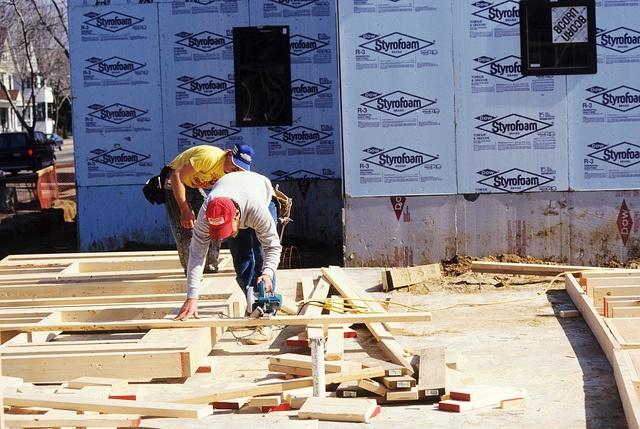

Many of us insulate our homes to save money, increase comfort and help the environment. It only seems logical that retrofitting houses to use less fossil fuels would also help combat climate change, right?
Sadly, the opposite is true when certain types of rigid foam insulation are used. Many builders and consumers seem largely unaware of the issue, helping it to persist. "Putting up blue board insulation all over a house is worse for the climate than not insulating at all," says Jonathan Fulford, president of Artisan Builders and a candidate for the Maine Senate. "It is actually better to have no insulation and to just crank up the heater and the air conditioner because of the global warming potential (GWP) of many types of home insulation."
Fulford is referring to extruded polystyrene (XPS), a rigid foam insulation that is commonly manufactured in distinctive colors to distinguish the brand of the product: "Blue board" or Styrofoam by Dow Chemical; "pink board" or Foamular by Owens Corning; and green insulation board by Kingspan are among the most concerning and widely used insulation products.The blowing agent used by Dow Chemical and Owens Corning to create these products is undisclosed and is likely HFC-134a, with a GWP that is 1,300 to 3,400 times greater than carbon (depending on the time horizon). It appears that Owens Corning switched to a blowing agent with a slightly lower GWP in 2009.
HFCs are man-made greenhouse gases that were created to replace CFCs and are commonly used in air conditioners, refrigerators, automobiles and aerosols. Although they are sometimes praised for being green because they don't deplete the ozone as do CFCs, this is false because of their enormous impact on climate change. The industry was recently required to phase out CFCs, and Dow is still publicizing information that claims its new foaming agents (HFCs) are a greener alternative.
The Dow website states: "Dow Building Solutions' unique and proprietary foaming agent solution will enable Dow to continue manufacturing Styrofoam Brand Insulation with the same product performance and high insulation-value standards our customers demand and rely on, while significantly reducing greenhouse gas emissions and eliminating the use of ozone-depleting materials." This appears next to a feel-good video with trees and green grass about the importance of protecting the environment.
Although there is awareness of the impact of the potent greenhouse gases used in industrial processes, the shift away from them has been relatively slow and with great reluctance from much of the industry. Honeywell created a blowing agent with a GWP that is less than 1, thus it is 99.9 percent lower than the GWP of HFCs. Honeywell calls it a "drop-in replacement for other liquid blowing agents." The industry, however, is reluctant to jump at this opportunity -- stating that it is concerned to rely on a single manufacturer of a product made in a single factory.
More potentially good news is that the Environmental Protection Agency proposed a ban concerning HRCs, including HRC-134a. The proposed start date for the ban was originally 2017, but insulation manufacturers called for a delay. The new EPA proposal targets 2021 for the ban to take effect. Considering the urgency of taking action to mitigate climate change, this proposed extension appears to serve the manufacturers far more than our climate.
The impact of rigid foam insulation on our climate has gone largely unnoticed by most media outlets, helping the issue to persist due to lack of public support. It would be a great cause for California to take a lead on, as it has for so many other important environmental issues. Considering that many people insulate their homes to protect the environment, this is a great opportunity for consumers to take voluntary action to purchase lower-GWP insulation and to encourage Dow, Owens Corning and Kingspan to switch to safer blowing agents with a lower GWP.
The market hasn't created an incentive for these companies to take quick action to find safer foaming agents, rather relying on a proposed EPA ban to create action. In many cases, reluctance may be caused by the upfront cost of retooling manufacturing plants for the use of different foaming agents or having to purchase more expensive foaming agents.
Compared to the scope and scale of other actions to slow down climate change, banning HRCs and other foaming agents with a high GWP seems like low-hanging fruit.
"When you are looking at a feasible strategy for surviving climate change, most of the strategies require large investments in infrastructure to switch over to renewable sources of energy and halt the use of fossil fuels," Fulford says. "It isn’t fast and easy to get rid of carbon dioxide emissions. A much faster reduction in our climate change impact is reducing the use of potent greenhouse gases and eliminating them from our global industrial processes."It has little if any impact on the global economy, unlike eliminating all fossil fuels. This is an easy way to start slowing climate change, combined with needed carbon reductions."
The good news is that safer alternatives to XPS already exist. Expanded polystyrene (EPS) and polyisocyanurate (ISO) are types of rigid foam insulation with a much lower GWP. If the builder is flexible with the type of insulation used, blown-in cellulose also has a very low GWP and is frequently made with post-recycled content.
Image credit: Flickr/Wisconsin Department of Natural Resources
The U.K.'s Refugee Integration Curse
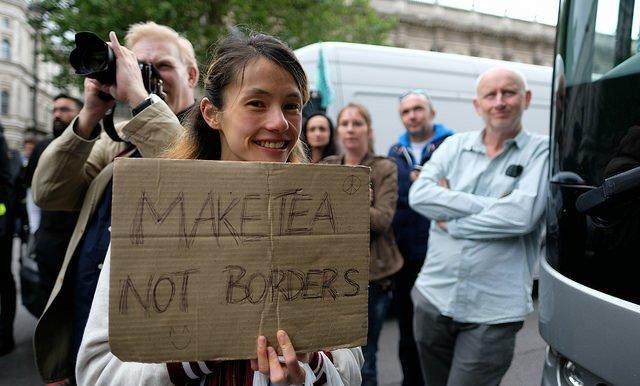

By Pranav Chopra
The recent conflict in Syria, and across other countries in the world, has created an influx of refugees who are allocated new homes in the European Union and specifically in the United Kingdom. The increased numbers have challenged countries to provide sufficient support to help these refugees integrate and assimilate. It is integral that this "dynamic, two-way process of mutual accommodation by all immigrants and residents of the U.K." occurs as seamless as possible.
The rising anti-immigrant sentiments from some politicians and the media have instilled a fear into nationals about these foreigners. This is not the best atmosphere for these refugees who have experienced trauma over a period of years and now face long waits to decide on their future. The U.K. refugee agencies and government are inundated with applications and doing their best to find the right support, but it is a long and arduous process. The need to act urgently to support integration focusing especially on equality and inclusion during the process is essential.
The importance of these two factors when integrating is eloquently relayed by Donna Covey in the Refugee Council conference report (2009):
"… When people flee persecution, the flight to safety is only the first part of their journey. The second stage – rebuilding life in a strange land – is equally important. Sometimes settling here can be as hard or harder than the original flight from tyranny. Integration is not about ‘fitting in,' or about refugees becoming ‘more like us.' It is, rather, about equality and inclusion, and ensuring that refugees have equal chances to live full, safe and productive lives."
Inclusion is the key as identified by Refugee Council and most commonly noted by refugees themselves as their main struggle to settle in their new environment. Multiple barriers exist in the U.K. specifically that inhibit refugees from effectively integrate, including:
- They remain under-qualified based on U.K. system. Overseas qualifications are not recognized as in, for instance, Germany and Sweden.
- Lack of cultural coaching. There is generally insufficient coaching provided in the U.K., in particular with respect to learning about the laws of the country and the culture. This sort of support would help refugees understand the host culture and avoid unintentionally offending anyone or breaking the law.
- Long waiting periods with no work. The U.K. does not allow asylum-seekers to work while waiting for asylum decisions. These long wait times for decisions on asylum cases create mental health and other problems, making it much harder for refugees to rebuild their lives once they receive permission to stay in the U.K.
Another key reason for us to embrace refugee communities in the U.K. as shown in research done by Migrant Forum is the challenge of isolation: "58 percent of migrants and refugees described loneliness and isolation as their biggest challenge living in the U.K.," the forum found. A number of inter-connected challenges also exist which compound feelings of loneliness and isolation, such as:
- Loss of family and friends
- Language barriers
- Loss of job or career
- Cultural differences
- Discrimination and stigma connected to being a foreigner
Both lack of inclusion and living in isolation present a challenge for refugees in the U.K. that must be tackled. Support from local communities and businesses in the U.K. can alleviate their transition and create a smooth integration process.
Chaigaram is one such social-purpose business that is looking to tackle this issue head on by providing refugees with employment opportunities to empower them to feel a part of the British society. The social enterprise set up a franchise of tea stalls across London food markets selling Indian tea which is freshly prepared and sold by refugees. The same refugees also manage and operate the stalls. This allows refugees to interact with the locals and work on their English language skills, gain confidence, and develop basic business skills which are necessary for them to work towards a career of their choice. The refugees are also involved in preparing specialist Indian tea blends which are sold at both retail and wholesale level across the U.K.
Such efforts resonate with Carnegie Council's conclusion: "It is time for us all to take responsibility for our future. What we do now in relation to the families who have arrived and will arrive affects future opportunity for all of us. We can genuinely welcome people, accept them as part of our world, support them to have the same opportunities as us, and adapt to our increased diversity, or we can exclude them and await the social and economic consequences."
Image credit: Flickr/Alisdare Hickson
Pranav Chopra, an ex-corporate junkie and a passionate social innovator, has worked across various jurisdictions on several strategy projects and is now looking to utilize his expertise to do good. He is heavily involved in a number of ventures with a social development agenda at their core ranging from helping refugees integrate in the UK through job creation, tackling the issue of illiteracy in India through the power of tourism, using technology to improve the lives of the deaf, promoting fair-trade and organic produce and reducing food wastage in Australia.
Beer-making without impact, the Heineken way


Royal Mail delivers the post—and many community services, too


Giving back the Aimia way to create real social value

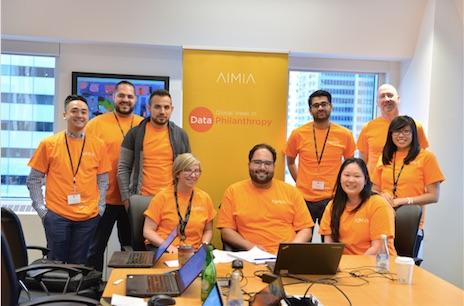
Arrow “guides innovation forward” by helping children become the innovators of the future
